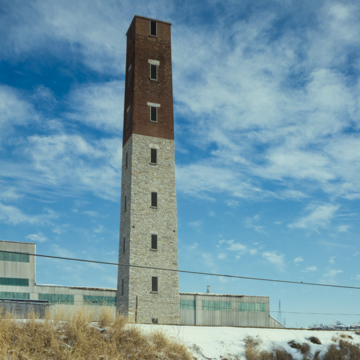Early panoramic views of Dubuque show the 150-foot-high limestone-and-brick shot tower “posing” on the banks of the Mississippi River like an Egyptian obelisk overlooking the Nile. It was the presence of lead that encouraged Julien Dubuque to come to the place and begin his mining operations. The production of lead shot for guns was, briefly, an important industry for the city. Melted lead was poured from the top of the tower, and it formed perfect spherical balls as it dropped and cooled. At the bottom was a large receiving tank of water. The tower was actually used for production only from 1852 through 1862. In 1874 an equestrian statue of Andrew Jackson (by John J. Kavanaugh) was placed on top of it, but this remained only through 1881. After suffering from general neglect for many years, the tower was stabilized in 1959, and it remains one of the city's major landmarks.
You are here
Shot Tower
If SAH Archipedia has been useful to you, please consider supporting it.
SAH Archipedia tells the story of the United States through its buildings, landscapes, and cities. This freely available resource empowers the public with authoritative knowledge that deepens their understanding and appreciation of the built environment. But the Society of Architectural Historians, which created SAH Archipedia with University of Virginia Press, needs your support to maintain the high-caliber research, writing, photography, cartography, editing, design, and programming that make SAH Archipedia a trusted online resource available to all who value the history of place, heritage tourism, and learning.














